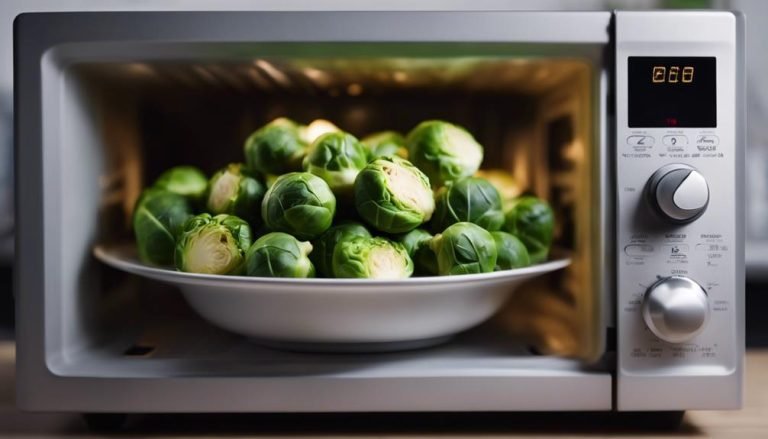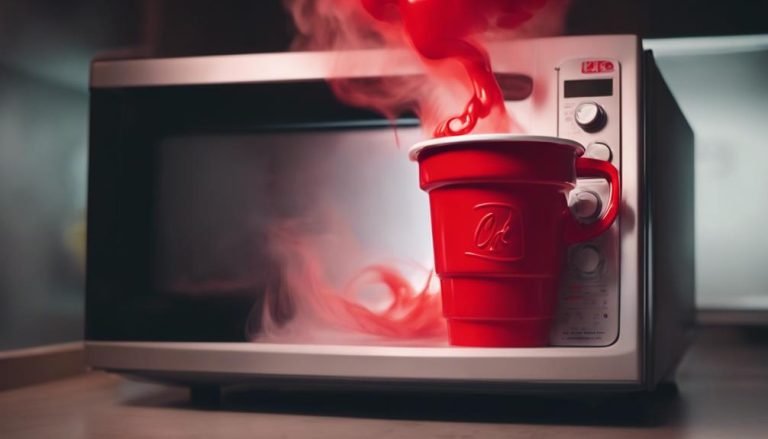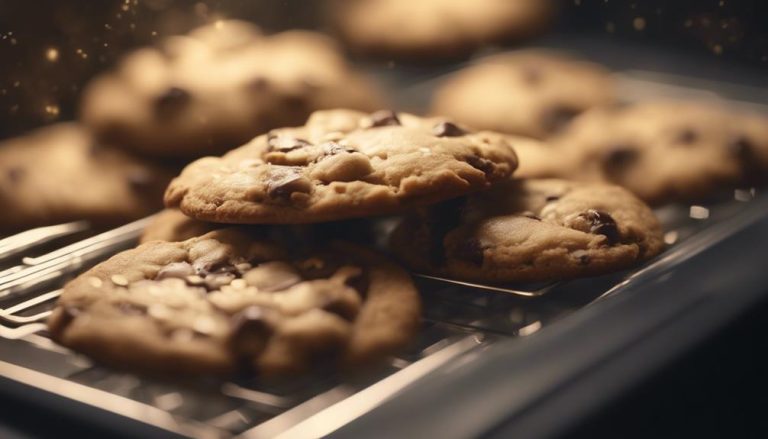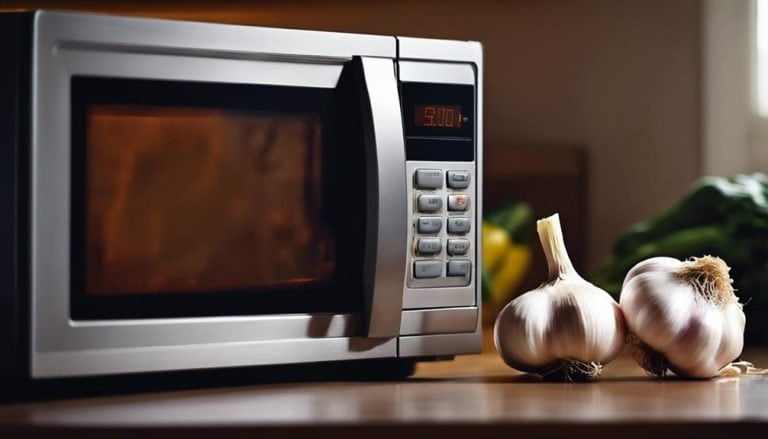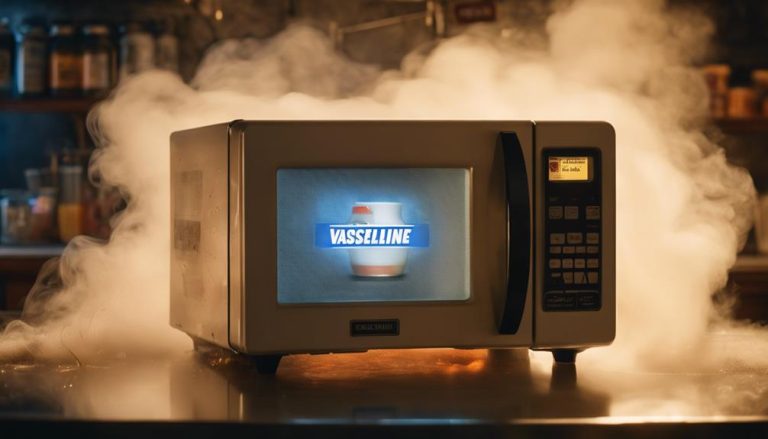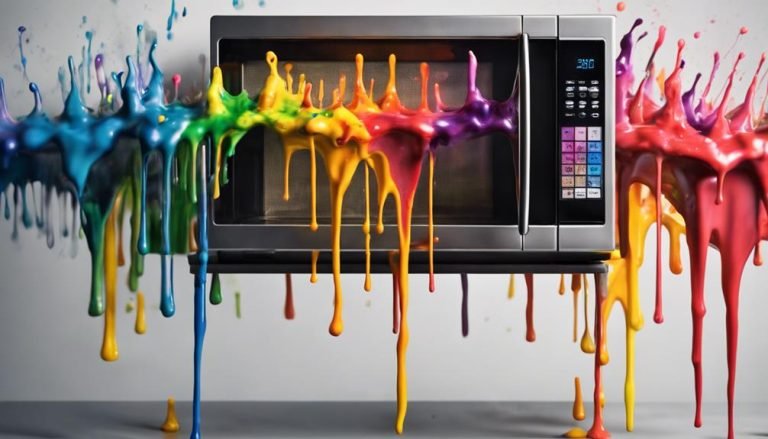Can You Microwave Chocolate
Yes, chocolate can be successfully microwaved if done correctly. It is important to use the right tools, techniques, and precautions to avoid mishaps. Make sure to use a microwave-safe bowl and chop the chocolate into small, even pieces for even melting.
Microwave the chocolate in short intervals, stirring in between, to prevent overheating and seizing. Be cautious not to overheat the chocolate, as it can burn easily. With proper care, microwaving chocolate can be a quick and convenient method for melting and creating delicious confections.
Key Takeaways
- Microwaving chocolate is possible but requires caution to avoid burning or scorching.
- Use microwave-safe bowls and heat in short intervals while stirring frequently.
- Consider alternative methods like a double boiler for more precise temperature control.
- Safety measures are crucial to prevent overheating, loss of texture, or grainy consistency.
Pros of Microwaving Chocolate
Microwaving chocolate offers a swift and efficient method for achieving smooth and evenly melted results. This technique allows for precise control over the melting process, ensuring that the chocolate reaches the desired consistency without the risk of overheating.
It is particularly advantageous when working with small amounts of chocolate needed for various recipes, as it provides a quick solution without the need for specialized equipment. Additionally, microwaving chocolate is beginner-friendly, making it accessible to individuals who may not have experience with traditional stovetop melting methods.
Ultimately, this method can save valuable time in the kitchen, offering a convenient alternative to achieve perfectly melted chocolate for your culinary creations.
Cons of Microwaving Chocolate
Microwaving chocolate poses risks of uneven heating, potentially causing burning or scorching while leaving other parts solid, altering the chocolate's taste and texture. Moisture from condensation in the microwave can lead to grainy or lumpy chocolate, and additives or fillings may not melt well, resulting in an undesirable texture.
To avoid these issues, it's crucial to follow chocolate melting tips, ensure not to overheat the chocolate, and microwave it safely to preserve its quality and consistency.
Chocolate Melting Tips
When melting chocolate, it is important to be cautious of using a microwave due to the risk of burning or causing the chocolate to seize. While microwaving chocolate may seem convenient, it comes with certain drawbacks. Here are some cons of microwaving chocolate:
- Easy to burn if not monitored closely.
- Can cause the chocolate to seize or become lumpy if overheated.
- Lack of precise temperature control makes it unsuitable for tempering chocolate.
- High-quality chocolates may not respond well to microwave melting.
To avoid these issues, using alternative methods like a bain marie or double boiler is recommended for a more controlled and reliable melting process.
Avoid Overheating Chocolate
While utilizing a microwave for melting chocolate may seem convenient, it is crucial to be aware of the risks associated with overheating and the detrimental impacts it can have on the chocolate's flavor and texture.
Overheating chocolate in the microwave can lead to burning, resulting in a bitter taste and a grainy texture that cannot be rectified. Due to the delicate nature of chocolate, it is prone to scorching quickly in the microwave, as controlling the temperature precisely is challenging.
To prevent overheating and ruining the chocolate, it is recommended to microwave it in short intervals and stir frequently. These precautions help maintain the chocolate's quality by avoiding overheating and preserving its desired taste and texture.
Microwave Chocolate Safely
Is it possible to achieve the desired results when microwaving chocolate, considering the potential pitfalls that may arise from this method of heating?
When it comes to microwaving chocolate, there are cons that need to be taken into account:
- Burnt or scorched chocolate: Due to uneven heating.
- Loss of temper and texture: Especially at high temperatures.
- Grainy or clumpy consistency: If overheated.
- Not suitable for delicate work: Such as tempering or molding.
Microwaving chocolate can lead to undesirable outcomes like burnt, grainy, or stiff chocolate, making it important to be cautious when using this method for heating chocolate.
Best Practices for Microwaving Chocolate
Using microwave-safe bowls like borosilicate glass or ceramic is essential for effectively melting chocolate in the microwave. To prevent burning and ensure even melting, microwave the chocolate in short 30-second intervals, stirring in between.
Avoid using metallic bowls or utensils, as they can cause uneven heating or sparks. When handling hot chocolate bowls, always use oven gloves or tea towels to prevent burns.
Additionally, make sure the bowl is completely dry and clean before melting chocolate to avoid any risk of the chocolate splitting. By following these best practices, you can successfully melt chocolate in the microwave without any mishaps.
Common Mistakes to Avoid
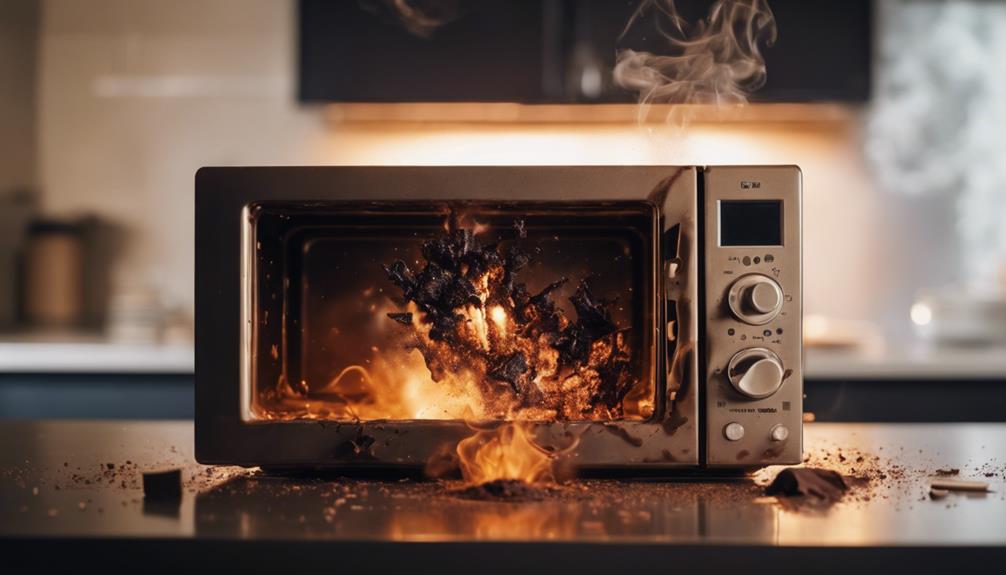
One common mistake to avoid when microwaving chocolate is using metal bowls or utensils, which can result in sparking or damaging the microwave. When working with chocolate, it's crucial to handle it properly to achieve the desired results.
Here are some more common mistakes to avoid:
- Heating chocolate into small increments: Gradually heat the chocolate in short bursts to prevent overheating.
- Avoid overcooking: Be careful not to overheat the chocolate, as it can lead to a grainy texture or burnt flavor.
- Watch out for high sugar content: Chocolate with high sugar content can easily scorch, so monitor it closely.
- Don't cover completely: Avoid covering the chocolate entirely while microwaving to prevent steam that can cause the chocolate to seize.
Alternative Methods to Microwave
Consider utilizing different methods besides the microwave to melt chocolate for a more controlled and consistent result. One effective alternative is to use a double boiler on the stovetop, providing gentle heat to melt the chocolate evenly. Another option is to use a slow cooker on low heat, ensuring a consistent melting process without the risk of burning the chocolate. Additionally, melting chocolate in a heatproof bowl over simmering water offers a reliable stovetop method. For those seeking precise temperature control, a sous vide machine can be utilized. Lastly, an unconventional yet creative method involves using a hair dryer on a low setting to gently melt the chocolate. Experimenting with these alternatives can yield excellent results.
| Method | Description | Benefits |
|---|---|---|
| Double Boiler | Melting chocolate on stovetop with indirect heat | Even melting process |
| Slow Cooker | Using low heat for consistent melting | Avoids burning the chocolate |
| Heatproof Bowl over Simmering Water | Melting chocolate directly over simmering water | Control over melting process |
| Sous Vide Machine | Precise temperature control for melting chocolate | Ensures accuracy in melting process |
| Hair Dryer | Creative method using gentle heat to melt chocolate | Unconventional yet effective |
Safety Tips for Microwaving Chocolate
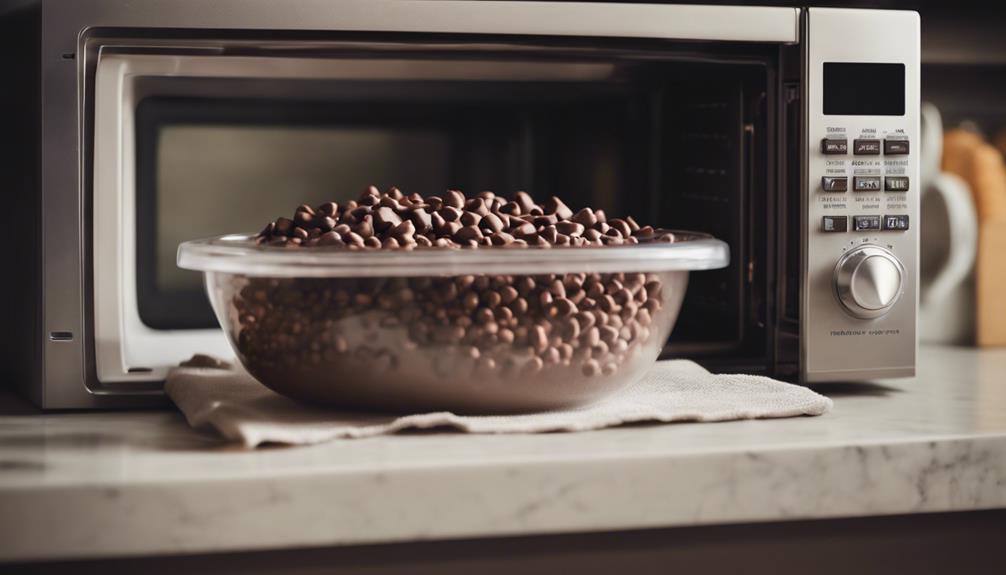
For safe melting of chocolate in the microwave, always use a microwave-safe bowl to prevent accidents and ensure a smooth process.
When microwaving chocolate, follow these safety tips:
- Use a microwave-safe bowl like borosilicate glass or ceramic to melt chocolate safely.
- Look for bowls labeled as microwave safe or without metallic designs to avoid accidents.
- Remove any metal utensils before microwaving chocolate to prevent sparking or damage.
- Handle the hot bowl with an oven glove or tea towel to avoid burns or injuries.
Frequently Asked Questions
Can You Use Any Type of Chocolate in the Microwave, or Are Certain Types Better Suited for Melting?
When considering chocolate melting, the type of chocolate used is crucial for successful results. Opt for uniform chocolate chips or bars for microwaving. Avoid fillings or coatings which can impact texture. Experimenting with different types can yield varied flavors and textures.
How Long Should You Wait Before Stirring the Chocolate in the Microwave?
When melting chocolate in the microwave, allow it to sit for 20-30 seconds before stirring. This brief interval allows for initial heat distribution, aiding in a smooth melt. Proper stirring technique is crucial for achieving a lump-free consistency.
Can You Add Other Ingredients, Like Butter or Cream, to the Chocolate While Microwaving?
Incorporating butter into chocolate during the microwaving process can enhance the texture and flavor of the final product. Carefully integrating room temperature butter allows for easier blending and control over the richness of the chocolate.
Are There Any Specific Types of Containers or Utensils That Should Be Used When Microwaving Chocolate?
When microwaving chocolate, prioritize microwave safety by using only microwave-safe containers, such as borosilicate glass or ceramic. Avoid metallic designs to prevent hazards. Remove metal utensils, handle hot bowls with care, and ensure cleanliness and dryness for optimal results.
Can You Reheat Chocolate That Has Already Been Melted in the Microwave?
Reheating melted chocolate in short intervals and stirring well for even consistency is recommended. To maintain quality, avoid frequent melting cycles. Store any leftover melted chocolate in an airtight container in the refrigerator for future use, ensuring proper chocolate storage.
Conclusion
In the dance of chocolate melting, the microwave can be a graceful partner when handled with care. The pros of quick and efficient melting must be balanced with the cons of potential overheating.
By following best practices, avoiding common mistakes, and considering alternative methods, one can navigate the microwave chocolate melting process smoothly. Remember, safety is key in this delicate waltz of chocolate transformation.

